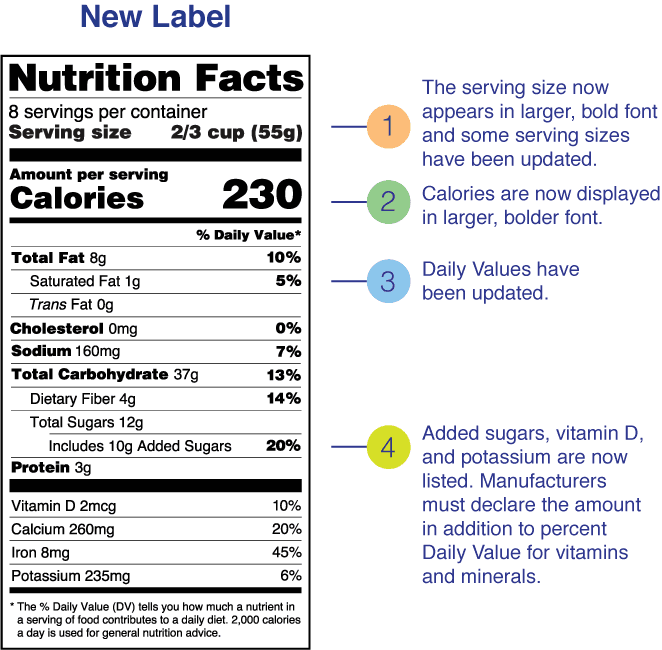
Growing up, I have barely looked at nutrition labels and understood them. It was not until I got some health issues did I started to study nutrition labels.
So here is a quick guide largely for my self. I hope it can help you in some way! (This guide is largely based on this video by Maryland Food Bank.)
The first thing to note on the label is calories —it is highlighted in most countries. On nutrition labels, you will see a row starts with Energy. And for an “average” woman (adult), she needs 2000 kcal per day and for men, 2500. Note that is only for reference. Your calories intake needs take into consideration your body weight, your health, your physical activity and other factors.
The next thing is fat. You will typically see three types of fat: unsaturated fat, saturated fat, and trans-fat. Unsaturated fat is best for our body and it can be found in fish, vegetable oil and nuts. Red meat contain saturated fat and should be moderated. Always avoid trans-fat.
Carbohydrate is rich in fruit and vegetables, pasta, bread and many treats. On the nutrition label, you will see “sugar” just beneath the carbohydrates section as sugar is contained in carbohydrates. An average person’s daily sugar intake should be around 25 to 35g. It is important to eat carbohydrates with fiber as the latter is what makes us moving.
What makes a good snack? A good snack should incorporate carbohydrates, fiber and protean. So you could an apple plus some cheese. Nuts are also good snacks.

Low salt (sodium) food is recommended by dietitians and doctors. According to the FDA, “The Daily Value for sodium is less than 2,300 milligrams (mg) per day.” Whereas Americans eat on average about 3,400 mg of sodium per day! High sodium intake can contribute to a series of undesirable health conditions.
Now the last element on the nutrition label that is very useful is the %DV (percentage daily value) or the %RI (reference intake, as seen mostly in the UK and European Union). Both carry the same information. Let’s use the nuts nutrition label above. The energy %DV per serving of these nuts is 9%, meaning that one serve will provide 9% of calories that constitute a healthy and balanced diet. If you have two servings of nuts, you have got 18% of your daily calories. As a rule of thumb, a %DV of 5% is considered low and 20% considered high.
Before I end, I want to point out another often ignored part of the nutrition label: fiber. Based on some research, it is recommended to eat around 30 gram of fiber everyday for an adult. Most people fall short on this aspect. Note that the recommendation of average fiber intake is still in scientific debate. Though the UK has recommended its people to eat 30 gram, the EU has not taken the same measure citing lack of sufficient evidence. That is perhaps why (I guess) we don’t have the %DV value for it!
